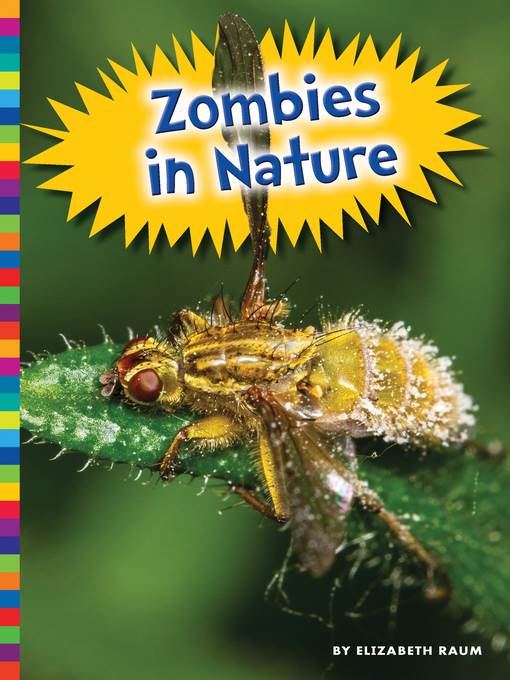
Zombies in Nature
Freaky Nature
فرمت کتاب
ebook
تاریخ انتشار
2015
Lexile Score
510
Reading Level
0-2
ATOS
3.3
Interest Level
K-3(LG)
نویسنده
Kirsten W. Larsonناشر
Amicus Publishingشابک
9781607538820
کتاب های مرتبط
- اطلاعات
- نقد و بررسی
- دیدگاه کاربران
نقد و بررسی

November 1, 2015
Gr 2-4-This series draws parallels among animals and superheroes and monsters, with limited success. A few sentences of text, accompanied by a photograph, explore unusual features or behaviors. Some connections, such as the blood-sucking practices of mosquitoes and vampire bats, fit neatly. Others are more tenuous, such as when the platypus's sixth sense is compared to Spider-Man's. At times analogies are stretched to the point of inaccuracy: a honey badger's skin is not "as tough as Iron Man's armor." Jumping quickly from one animal to the next results in some lack of clarity. Though many photographs are visually impressive, several are standard full-body photos that don't highlight the animal's featured ability. Added facts appear in a question-and-answer format at the bottom of some spreads. VERDICT There are plenty of fascinating bits of animal information throughout the series, particularly in Zombies and Super Powers, but the sometimes scattered presentation limits its general usefulness.
Copyright 2015 School Library Journal, LLC Used with permission.

October 1, 2015
Grades 3-5 No, not the magically reanimated monsters, although the origin of the word is acknowledged here. These zombies are parasites, mostly worms and spores, that infect other living creatures and take over their bodies. The examples are numerous: a fungus infects a carpenter ant and sends it to the damp ground. The ant dies, and the fungus grows from its head, spreading spores that will infect other ants. Elsewhere, a snail eats bird droppings containing worm eggs that hatch; the worm takes over and forces the snail to climb up high, where it is eaten by a bird. The worm lays eggs, and the cycle starts again. Sound like science fiction? It gets weirder. A type of wasp hatches inside a caterpillar, eats its way out, and builds a cocoon, while, mysteriously, the caterpillar stays to stand guard. This is a very effective look at basic biology and the way parasites operate, and the detailed photographs, often gruesome, effectively highlight and validate the examples they accompany.(Reprinted with permission of Booklist, copyright 2015, American Library Association.)

























دیدگاه کاربران